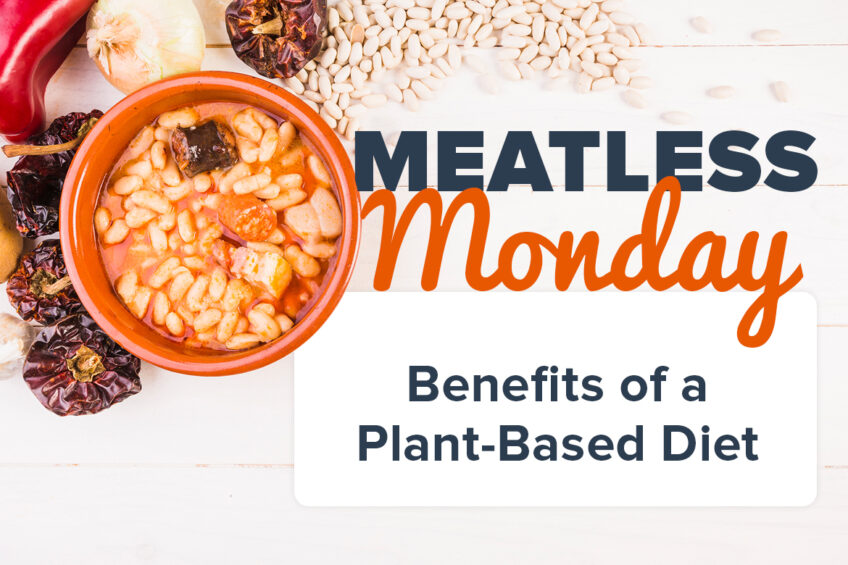Benefits of a Plant-Based Diet
Plant-based diets can come in different forms. “Plant-based” indicates that the eating pattern is made up predominantly or entirely of plant foods, with no direction as to the type of plant foods or the level of processing. Vegetarian diets are “mostly” plant-based, as they still contain varying amounts of animal products. Vegan diets can be thought of as 100% plant-based, since they contain no animal foods of any sort, and in most cases no honey.
Regardless of whether someone is following a vegan or plant-based diet or not, we would recommend someone choose whole-foods more often because the nutrient profiles are more appropriate for humans. For plant-based diets, the story is no different. Recognize that a diet can be vegan or plant-based, but that does not automatically imply it will confer health benefits; it still needs to be balanced overall and provide someone with all the nutrients they require. In doing so, a properly planned plant-based or vegan diet based mostly around whole foods can have a significant impact on one’s physical and mental well-being, athletic performance, and energy levels. This is likely due to an increased intake of vitamins and minerals, fibre, and antioxidants, and a decreased intake of unhealthy fats, refined carbohydrates, and animal protein.
Keep in mind that the benefits associated with a plant-based diet focused on whole foods are only conveyed if a person can comfortably follow it and has a positive motivation to do so. Yes, the benefits of a eating a plant-based diet are far-reaching.1 But it can have an unintended impact on one’s mental health and relationship with food if done incorrectly or out of restriction. Enjoyment of the food you are eating is still one of the main factors in deciding whether it is right for you!
Fibre
One of the major reasons why plant-based diets are so healthful is because of fibre. Fibre has always been touted for its ability to regulate bowel function, stabilize absorption of nutrients, and allow us a better opportunity to honour hunger and satiety cues.2,3 In recent years, its role in optimizing our gut health through its effects on the microbiome (the population of microorganisms that live in our gut) has been more in the spotlight. Fibre has been shown to have a major effect on our gut bacteria, even outside of the definition of “prebiotics”.4,5 This then has an effect on our health long term, as research shows that a more favourable gut bacteria profile has protective effects against various chronic diseases.4
Foods within plant-based diets that make up a large portion of the protein component for many people such as beans, lentils, chickpeas, and split-peas, are also very high in fibre. So many people may find their fibre intake increase naturally without even trying!
Antioxidants
It comes as no surprise that people’s consumption of antioxidants, the nutrients in plants that offer protection for all of our body’s cells, is often increased when the focus is only on plants. Antioxidants are found in plants in the highest abundance, so giving yourself more opportunities to eat plants throughout the day means a higher likelihood that you’ll consume antioxidants. This is a similar phenomenon to fibre as mentioned above. The benefits associated with consuming a high number of antioxidants relates to their ability to protect our bodies from the inside out. Their consumption has been associated with a decrease in occurrence of many chronic diseases and health problems such as diabetes, cancer, osteoporosis and heart disease.6
Antioxidants can function like a buzz-word in today’s society, but it is important not to lose sight of this point: antioxidants are more effective when found in foods instead of supplements. Food contains more nutrients in its “package” (in combination with other nutrients like fibre, carbohydrates, proteins, and fats) thus it would be more beneficial to obtain nutrients from whole-foods compared to supplements!
Nutrients to Consider
Vitamin B12
Vitamin B12, which is made by bacteria, is most notably found in animals due to their supplementation or because of a symbiotic relationship between them and the bacteria that make it. For vegetarians, milk, eggs, and fish are still sources of the vitamin. But for vegans, look to fortified almond or soy beverages, nutritional yeast, or supplements as easy sources. Maintaining an adequate intake will ensure that no neurological or mental issues arise in the long term.
Vitamin D
This vitamin, which is technically a hormone, is only made in Canadians’ skin between the months of April and October when the sun emits strong enough UV rays. Outside of those months, the sun is not strong enough to allow our skin to make it. Even within those months, we may not go outside, we may cover out skin, or we may use sunscreen; all of these prevent our bodies from making vitamin D. With this in mind, it is usually beneficial for everyone to supplement with this nutrient as it is difficult to obtain from food sources alone.
Iron
The type of iron found in plants (non-heme) is less bioavailable to humans in our gastrointestinal tract than the type of iron found in animals (heme). There is a benefit to this, as the ability to regulate our iron status is more pronounced when we obtain most of our iron from non-heme sources.7 Nonetheless, those following a plant-based diet need to be more cognizant of where they are getting it from. Consuming legumes (beans, lentils, split peas), leafy green vegetables, and soy products regularly should be enough!
Calcium
The most convenient sources of calcium are dairy products or fortified dairy alternatives like almond or soy beverages. The age-old thought that calcium is only found in cow’s milk is simply not true. For vegetarians who still consume dairy, they will have foods like yogurt, cheese, cottage cheese, and kefir to obtain their calcium from. But for vegans, other than the select almond, soy, or coconut products that are fortified, calcium is naturally found in leafy green vegetables, almonds, sesame seeds, chia seeds, and tofu, all foods that would be beneficial to include more often for reasons other than calcium!
Final Thoughts
Whether you are searching for ways to increase your vegetable or fruit intake or looking to dive head-first into a vegan eating pattern, it does not matter; the fact that you made a conscious decision to up your intake of plants is already phenomenal! But every step in that direction has the potential to create a major domino effect. My joy is in the ability to work with people to help them recognize that!
By Brandon Gruber, Registered Dietitian
References
-
Melina, V., Craig, W., & Levin, S. (2016). Position of the Academy of Nutrition and Dietetics: Vegetarian Diets. Journal of the Academy of Nutrition and Dietetics, 116(12), 1970–1980. https://doi.org/10.1016/j.jand.2016.09.025
-
McRorie, J. W., & McKeown, N. M. (2017). Understanding the Physics of Functional Fibers in the Gastrointestinal Tract: An Evidence-Based Approach to Resolving Enduring Misconceptions about Insoluble and Soluble Fiber. Journal of the Academy of Nutrition and Dietetics, 117, 251–264. https://doi.org/10.1016/j.jand.2016.09.021
-
Sánchez, D., Miguel, M., & Aleixandre, A. (2012). Dietary Fiber, Gut Peptides, and Adipocytokines. Journal of Medicinal Food, 15(3), 223–230. https://doi.org/10.1089/jmf.2011.0072
-
Makki, K., Deehan, E. C., Walter, J., & Bäckhed, F. (2018). The Impact of Dietary Fiber on Gut Microbiota in Host Health and Disease. Cell Host & Microbe, 23(6), 705–715. https://doi.org/10.1016/j.chom.2018.05.012
-
Deehan, E. C., & Walter, J. (2016). The Fiber Gap and the Disappearing Gut Microbiome: Implications for Human Nutrition. Trends in Endocrinology and Metabolism: TEM, 27(5), 239–242. https://doi.org/10.1016/j.tem.2016.03.001
-
Zhang, Y.-J., Gan, R.-Y., Li, S., Zhou, Y., Li, A.-N., Xu, D.-P., & Li, H.-B. (2015). Antioxidant Phytochemicals for the Prevention and Treatment of Chronic Diseases. Molecules, 20(12), 21138–21156. https://doi.org/10.3390/molecules201219753
-
Fuqua, B. K., Vulpe, C. D., & Anderson, G. J. (2012). Intestinal iron absorption. Journal of Trace Elements in Medicine and Biology, 26(2–3), 115–119. https://doi.org/10.1016/j.jtemb.2012.03.015

